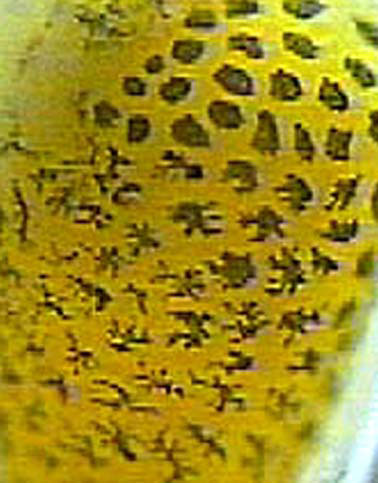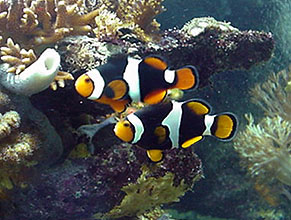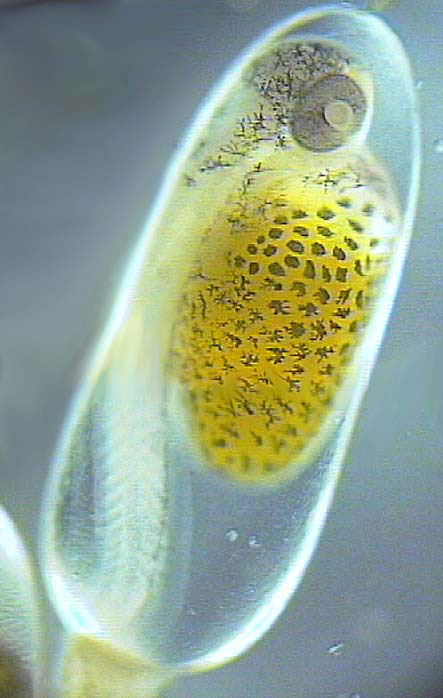

|
|
Biology Photo of the Month - May - June 2003Clownfish
Egg
|
 |
|
Three
day old clownfish egg
(move mouse over image for a wider view) |
The pair of percula clownfish in Augsburg's coral reef aquaria spawn approximately every two weeks through most of the year as long as they are well fed and there are no major disturbances in their tank. These frequent spawnings provide a supply of eggs that can be used to observe developing embryos in the lab or classroom. Small numbers of eggs can be removed using a small pipette, a process that is accompanied by much protest from the parent fish who attack the pipette to try to protect their clutch of eggs. If done with care, the eggs can be removed without damage, allowing living embryos to be observed, with clearly observable beating hearts and blood flowing through arteries, capillaries, and veins.

The parents of the egg
shown in these photos.
Click
here for additional information and more
photos showing this pair tending eggs .
The egg shown in these photos was 3 days old at the time it was photographed. The large yellow structure speckled with black pigment-containing cells is the yolk sac, which contains the food used by the embryo. The embryos develop rapidly, changing noticeably each day, with the yolk sac steadily decreasing in size as fins, gills, mouth, and other body structures develop rapidly during a development period lasting a little more than a week.
Though the eggs are tended carefully by the parents (the male parent especially), the larval fish that hatch from the eggs swim away and live a planktonic lifestyle before undergoing metamorphosis. Metamorphosis transforms them from larval fish that don't look much like clownfish to miniature versions of the adults that begin to live a more sedentary adult lifestyle.
In aquaria, special provisions need to be made to ensure the survival of the young. To raise the young they must be removed shortly after hatching to a rearing tank and fed live marine rotifers as a first food. Rearing the young and rearing the rotifers to feed the young takes considerable time and effort, so thus far none of the young from this pair of clownfish have been raised.

Three
day old clownfish egg. The "stalk" at the base of the egg
is actually the tuft of adhesive filaments that held the egg onto the
rock that served as the spawning site.
See also: